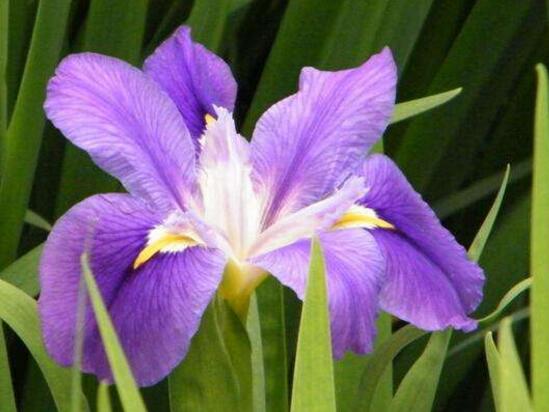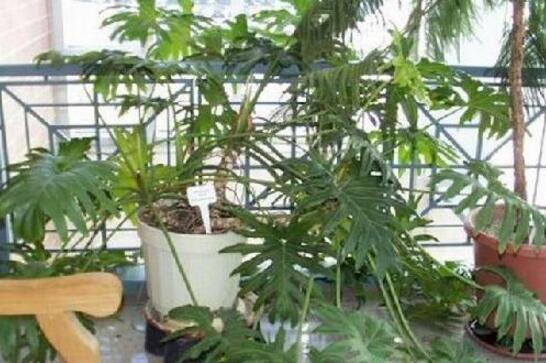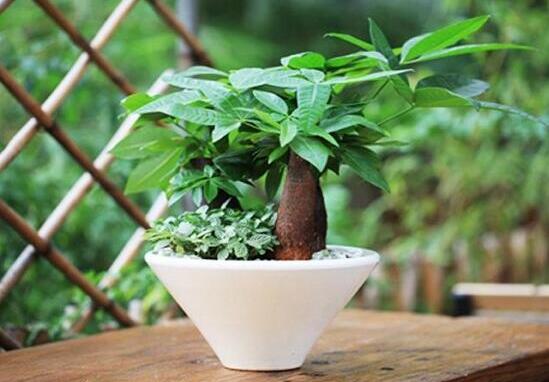How to reproduce Iris, the method of propagation / sowing / ramet of Iris
Iris is a common flower in people's life, and it is cultivated in many people's homes in our country, so people are more concerned about its reproduction. About how to reproduce Iris, what are the breeding methods of Iris? Next, the editor will take you to learn about it.
How to propagate / sow / ramet of Iris

On the question of how to reproduce iris, it can be divided into two types: sowing reproduction and ramet reproduction, and the survival rate is very high, of course, if you have to master the method. Below are the details of the breeding methods of Iris, which can be found out by interested friends.
2. Propagation methods of Iris
Sowing and reproduction
1. Sowing time
Among the breeding methods of iris, sowing reproduction is a more commonly used method of reproduction. This kind of reproduction is generally best carried out in spring and autumn every year, because the environment is more suitable and more conducive to the growth of irises.
two。 Select soil
The selection of soil is an important part of sowing and reproduction, and the selection of the right soil is of great help to irises. The selection of soil is introduced in detail in the article on the culture method of iris, which you can refer to.
3. Sowing method
When sowing, we have to flatten the soil first, and then sow the seeds mixed with fine sand, and then cover the soil around 2cm. Only watering can be carried out to complete these processes. Watering is best carried out with a spray can. If you irrigate the seeds directly, it is easy to run away the seeds. After watering, you can wait for germination and normal maintenance after germination.
Ramet propagation
1. Ramet time
Ramet propagation is generally a method of reproduction of old plants that have grown for 2-5 years. Remember to avoid the rainy season when doing this kind of propagation, otherwise it will not be easy to survive.
two。 Ramet method
When selecting ramets, it is generally necessary to select tubers with 3-4 buds, then open them when you see them, and then plant them. After planting, you need to water once and pour thoroughly once, and then stand for 15-20 days and then you can carry out normal maintenance.
Propagation method of Iris flavescens: ramet, sowing and bulb
Yellow iris is a kind of perennial herbaceous plant, the flower is yellow, it is very beautiful when it blooms, the flower contains 2 flowers, the flowering period is from May to June, we can see the figure of yellow iris in hillside grass and forest edge grassland, it has high horticultural value, the following is to learn about the breeding method of yellow iris.
Propagation method of Yellow Flower Iris 1. Ramet of Yellow Flower Iris
Ramet propagation is generally carried out every 2 to 4 years, in spring, autumn or after anthesis. Iris splits after anthesis (to avoid the rainy season). The flower buds can differentiate well before winter and blossom the following year. It is better to have 3 to 4 buds when dividing the rhizome. If the ramet is too small, it will affect the flowering of the following year. In ramet propagation, the upper leaves of the plant should be cut off and left about 20 cm for planting. Most varieties of Iris are suitable for shallow planting. The planting spacing varies according to the species, the strong species is 50 × 50 cm, and the general variety is about 20 × 20 cm.
A, applying sufficient basal fertilizer, the soil should keep high humidity during the growing period, especially at the flowering stage, the roots should grow in water, and the water depth 5~7cm is suitable.
B. Soil pH planting should be below 6.5. otherwise, the plant will grow slowly and yellowing may occur.
C. fertilize for 3 to 4 times during the growing period, and pay attention to the removal of weeds and withered yellow leaves. Summer high temperature, should often spray water to the leaf surface, increase air humidity, make seedling strong leaf green.
2. Sowing seeds of Iris flavescens
If the seed is used for propagation, it should be carried out immediately after the seed is mature, so that the seed is easy to germinate and can blossom in 2 to 3 years. Pot sowing from March to April, the optimum temperature for germination was 18-21 ℃, germinated 15-20 days after sowing, and transplanted when the seedling was high 5~6cm.
3. Iris flavescens bulb
After a year of planting and flowering, a seed ball will run out of nutrients and produce new roots, and there will be many bulbs around the new bulb, which can develop into a flowering ball after one or two years of planting. The world flower planting experts carry out tissue culture of axillary buds, bulbs, stem plates, flower stems and other different organs of Iris bulb to make it grow new bulbs, which provides a new way to accelerate propagation and cultivate disease-free strong mother balls.
The method of ramet propagation of Iris
Iris, also known as Magnolia, blue butterfly, etc., because the iris has excellent style and soft color, its rich and large flowers are very much like dancing butterflies, so the ornamental value is very high. Iris can be propagated by ramet and sowing. Generally speaking, Iris is more commonly used in ramet reproduction.
Iris flower
Usually from October to November, the rhizome with 2-3 buds is needed to be divided, and the wound is dipped with sulfur powder or plant ash. After slightly drying, it is planted in the mud basin. The basin soil can be mixed and prepared with 6 parts of humus, 3 parts of compost and 1 part of river sand, and proper addition of mature organic fertilizer as base fertilizer. The basin bottom cushion is covered with broken tiles to facilitate drainage. The ball and kite tail should be deeply planted, when planting, the bud eyes are facing up, the corm is embedded in the soil, and the covered soil is 6 cm 8 cm; the rhizome Iris should be planted shallowly, and the covered soil is 3 cm 4 cm thick. After planting, pour water thoroughly, cover the soil surface with a layer of hay, and place it in a semi-shady and ventilated place, which is beneficial to the growth of the bulb. During the growth period, pay attention to watering to keep the soil moist. But can not accumulate water, when bolting indispensable moisture, into autumn should be strictly controlled watering. The dilute phosphorus and potassium liquid fertilizer was applied every 14 days. In order for the new ball to grow sturdily, fertilizers are needed after the flowers fade. Summer should pay attention to avoid the hot sun exposure, placed in a well-ventilated, semi-shady place, otherwise it will cause leaf tip scorch, affecting ornamental.
- Prev

How to reproduce spring feather, sowing / cutting / ramet can be done (temperature is the key)
The leaves of Chunyu can reach 60 cm in length and 40 cm in width, so it is very ornamental, so many people want to expand the planting scale, so this time involves the problem of reproduction, so how does Chunyu reproduce? Today, we will introduce several main breeding methods of spring feathers.
- Next

How to reproduce the rich tree? the four propagation methods of the rich tree / May cutting has a high survival rate.
Fortune tree, a kind of foliage plant with beautiful meaning and beautiful plant type, can not only beautify the environment, but also purify people's mind. It is a rare indoor breeding product. Nowadays, more and more people raise rich trees, and this requires a large number of reproduction, so how do rich trees reproduce?
Related
- Fuxing push coffee new agricultural production and marketing class: lack of small-scale processing plants
- Jujube rice field leisure farm deep ploughing Yilan for five years to create a space for organic food and play
- Nongyu Farm-A trial of organic papaya for brave women with advanced technology
- Four points for attention in the prevention and control of diseases and insect pests of edible fungi
- How to add nutrient solution to Edible Fungi
- Is there any good way to control edible fungus mites?
- Open Inoculation Technology of Edible Fungi
- Is there any clever way to use fertilizer for edible fungus in winter?
- What agents are used to kill the pathogens of edible fungi in the mushroom shed?
- Rapid drying of Edible Fungi

